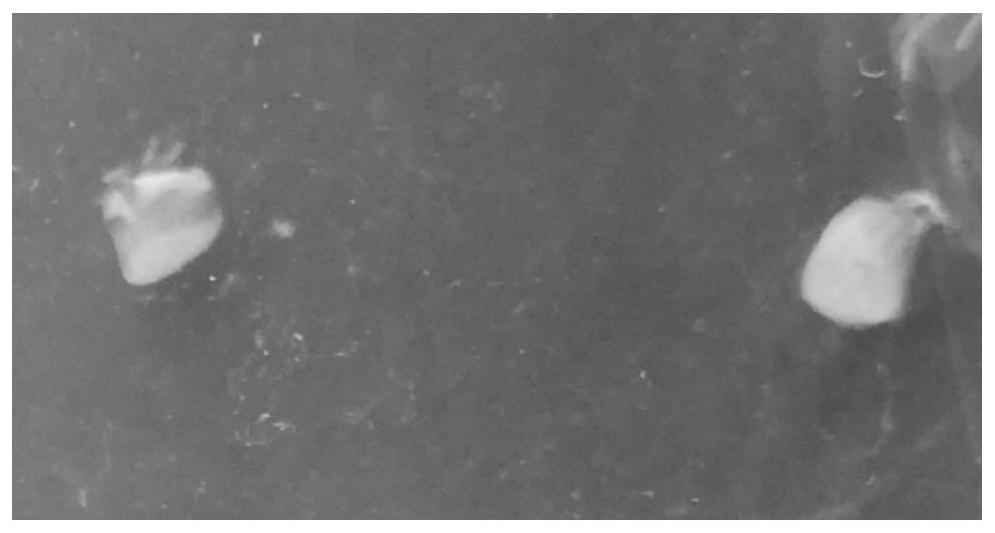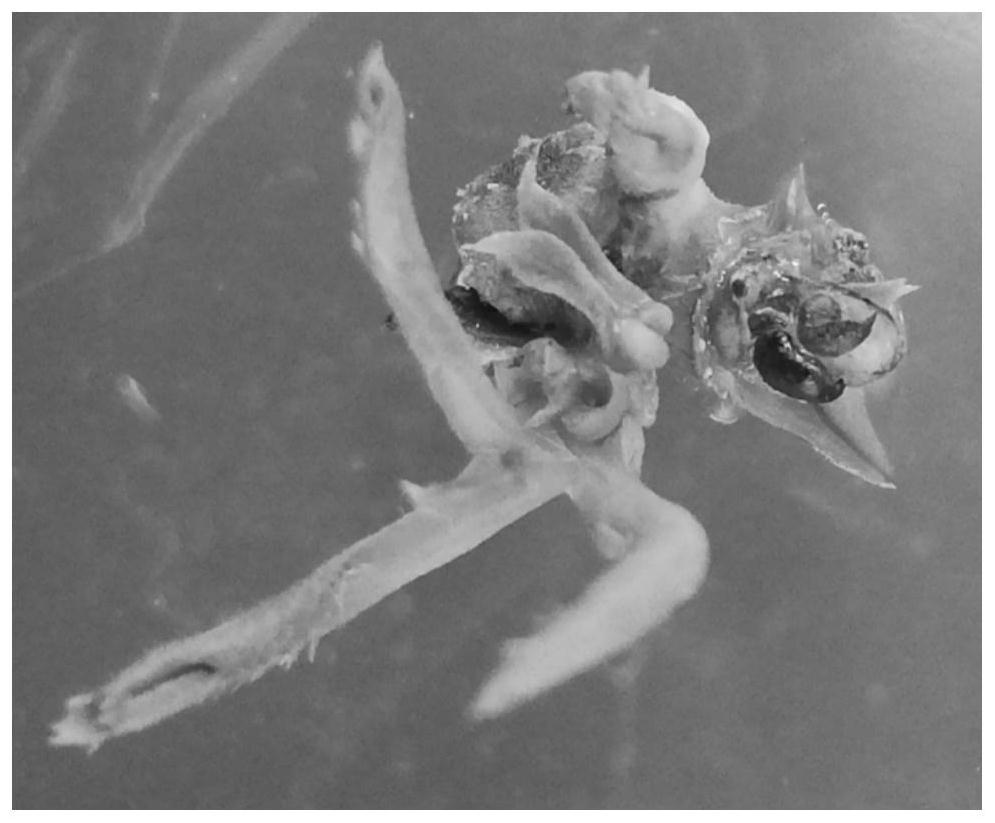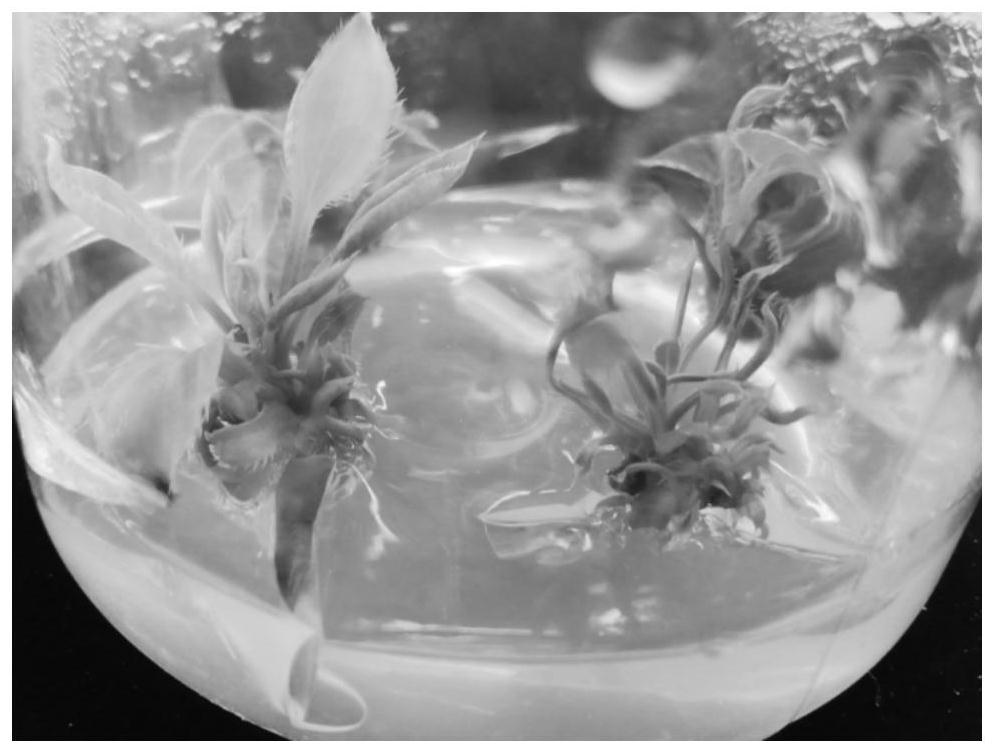A method for direct regeneration and in vitro rooting of Qizhu hypocotyls
A technology of exogenous root and hypocotyl, applied in the field of plant biology, can solve the problems of low multiplication coefficient and low seedling rate, and achieve the effects of simplifying reproduction steps, high seedling rate and high regeneration efficiency.
- Summary
- Abstract
- Description
- Claims
- Application Information
AI Technical Summary
Problems solved by technology
Method used
Image
Examples
Embodiment 1
[0051] A method for directly regenerating hypocotyls and rooting in vitro, specifically comprising the following steps:
[0052] (1) Place the hypocotyls of the sterile seedlings of Qizhu that have been germinated for 3 weeks in a centrifuge tube filled with sterile water, and perform ultrasonic treatment for 60 seconds in an ultrasonic instrument (600W), and then place them in a sterile operating table. Cut into 0.3cm sections and set aside;
[0053] (2) The hypocotyl sections in step (1) were inoculated horizontally in the adventitious bud induction medium ( figure 1 ), at a temperature of 22±2°C, the light source is LED white light, and the light intensity is 50μmol·m -2 ·s -1 , the light time is 16h, and the relative humidity is 50-60% in a constant temperature culture room to carry out the induction and subculture of adventitious buds. After 2 weeks of light culture, adventitious bud clusters were induced at the hypocotyl incision ( figure 2 ); after continuing to cu...
Embodiment 2
[0058] In this example, the effect of ultrasonic treatment time on the induction of adventitious buds in Qizhu hypocotyls was tested.
[0059] The hypocotyls from the sterile seedlings of Qizhu that had germinated for 3 weeks were placed in a centrifuge tube filled with sterile water and subjected to ultrasonic treatment for different times (0, 30, 60, 120 and 180s) in a sonicator (600W) , and then cut into 0.3cm sections in a sterile operating table, inoculated horizontally in the adventitious bud induction medium at a temperature of 22±2°C, the light source is LED white light, and the light intensity is 50μmol·m -2 ·s -1 , the light time is 16h, and the relative humidity is 50-60% in a constant temperature culture room to carry out the induction culture of adventitious buds. After 3 weeks of light culture, the induction rate of adventitious buds and the average number of adventitious buds produced by each explant were counted. The results of the study (Table 1) show that u...
Embodiment 3
[0064] In this example, the effects of different light sources and light ratios on the elongation of Qishu hypocotyl adventitious buds were tested.
[0065] The elongated Qizhu tissue culture buds in Example 1 were isolated and inoculated in the elongation medium to carry out elongation culture of adventitious buds under different light quality conditions. The light quality was cultivated with white light, red light, blue light, red-blue composite light (1:1) and red-blue composite light (3:1) respectively. After 3 weeks of light cultivation, the elongation of adventitious buds was counted.
[0066] The research results show (Table 2) that light quality and ratio play an important role in the elongation process of Qishu adventitious buds. Among the different light quality species tested, when LED red:LED blue=3:1, Qishu adventitious buds The fastest growth rate, the best elongation effect, the average height of 4.4cm.
[0067] Table 2 Effect of LED light quality on elongatio...
PUM
 Login to View More
Login to View More Abstract
Description
Claims
Application Information
 Login to View More
Login to View More - R&D
- Intellectual Property
- Life Sciences
- Materials
- Tech Scout
- Unparalleled Data Quality
- Higher Quality Content
- 60% Fewer Hallucinations
Browse by: Latest US Patents, China's latest patents, Technical Efficacy Thesaurus, Application Domain, Technology Topic, Popular Technical Reports.
© 2025 PatSnap. All rights reserved.Legal|Privacy policy|Modern Slavery Act Transparency Statement|Sitemap|About US| Contact US: help@patsnap.com



